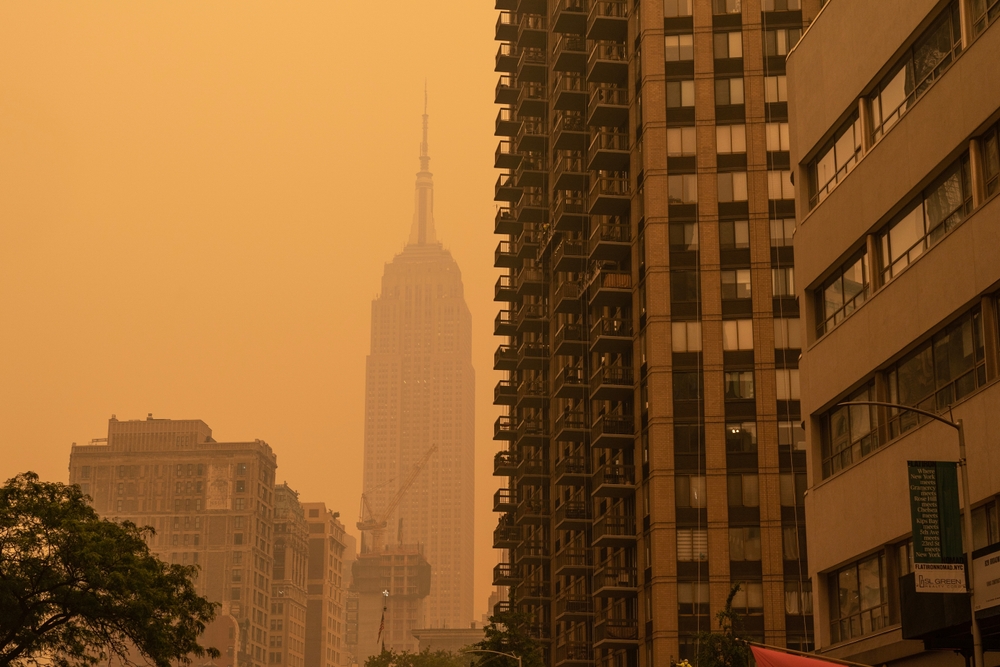New York Governor Kathy Hochul recently signed S.2129-B/A.3351-B into law. This legislation creates a Climate Change Adaptation Cost Recovery Program, which shifts the costs of climate adaptation to companies deemed responsible for contributing to climate change. Funding from the program will be used for “critical infrastructure investments, such as coastal protection and flood mitigation systems, to enhance the climate resilience of communities across the state,” according to a press release issued by the governor’s office. The law follows similar legislation in Vermont.

“With nearly every record rainfall, heatwave, and coastal storm, New Yorkers are increasingly burdened with billions of dollars in health, safety, and environmental consequences due to polluters that have historically harmed our environment,” Hochul says in the press release. “Establishing the Climate Superfund is the latest example of my administration taking action to hold polluters responsible for the damage done to our environment and requiring major investments in infrastructure and other projects critical to protecting our communities and economy.”
The Act will require “cost recovery demand” payments from entities the New York State Department of Environmental Conservation (DEC) deems “responsible parties” under the law, primarily to fund “climate change adaptive infrastructure projects” within New York.
A “responsible party” is defined as a person or company owning more than 10% of any company that “engaged in the trade or business of extracting fossil fuel or refining crude oil” during the “covered period,” which is between January 1, 2000, to December 31, 2018, and that the DEC determines is accountable for more than 1 billion metric tons of certain greenhouse gas (GHG) emissions.
The law’s definition of a responsible party “does not include any person lacking ‘sufficient connection with the state to satisfy the nexus’ of the U.S. Constitution,” law firm Sidley Austin LLP says. “The Vermont law parallels this definition of a responsible party, save for Vermont’s longer covered period, which extends from 1995 to 2024.”
This means the emissions created by the “responsible party” aren’t required to originate in the state.
Emissions covered by the Act include those resulting from fossil fuel or petroleum product activities like:
- Extraction
- Storage
- Production
- Refinement
- Transport
- Manufacture
- Distribution
- Sale and use
The law directs the DEC to collect $3 billion each year from responsible parties for a 25-year period.
“The program will assign a percentage of the $3 billion to such responsible parties based on their percentage of greenhouse gas emissions by all responsible parties,” notes law firm Reed Smith LLP in a Lexology article. “DEC will then use the funds to pay for climate mitigation projects identified as part of a statewide climate change adaptation master plan to be created by DEC within two years of the passage of the Act.
“The Act is expected to be challenged on a variety of grounds, including federal pre-emption and violations of the due process and commerce clauses of the U.S. Constitution. However, the Act was intentionally structured to resemble the federal Superfund statute, which has survived several rounds of challenges to the U.S. Supreme Court in the past. At this point, it appears to be a close call as to whether the statute will survive such challenges. Even if it does survive, individual responsible parties may have defenses to their own individual liability under the statute, which will be a fact-intensive inquiry and largely be based on how DEC implements the program. While the legislation goes into effect immediately, DEC is required to draft regulations in the next year to implement the program.”
Considering the significant amount of money expected from industry sources to fund the program, numerous challenges are certain, including lobbying efforts and legal challenges at both the state and the federal level. Analysts predict the law will see some modifications over time if it survives the legal challenges intact.